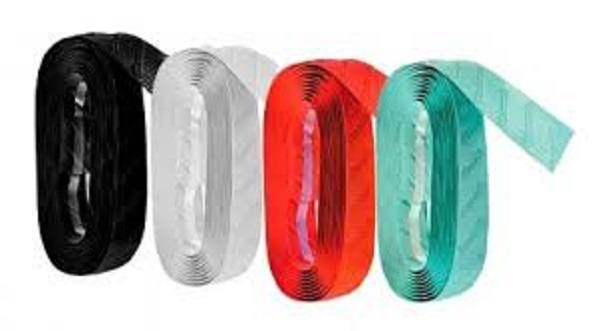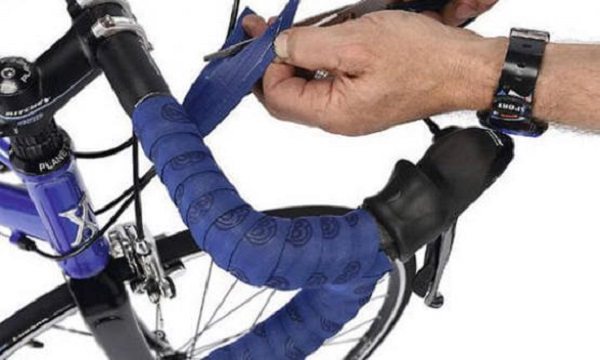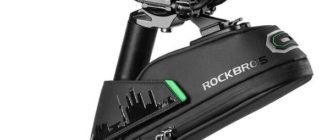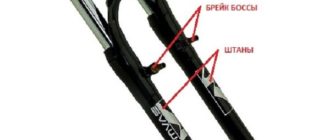The steering wheel is one of the most important elements of steering. Not everyone realizes the importance of handlebar wrapping. It is not uncommon for cyclists to put up with a worn handlebar wrap. Although bike handlebar wraps are quick and relatively inexpensive to change. A newer winding will immediately make the bike look more attractive to look at. But it’s not just about beauty, the feel and performance of the handlebar will also change. Why wrap the handlebar and how to wrap a bicycle handlebar correctly? Let’s tell below.
Why do you need to wrap the handlebar
Often cyclists buy and install on the handlebar grips. But with road bikes this is not an option. Since their handlebars have the semblance of a curved ram’s horn, the way out is to wrap it with something. There are special tapes for sale in sports stores. These are used to wrap the handlebars of road bikes.
Wrapping on the handlebars of bicycles can be made of different materials – this largely forms the cost. Wrapping should:
- Assist in comfortable and safe steering;
- Provide a firm grip regardless of how wet your hands are;
- not change when used all year round;
- be aesthetically pleasing.
Types of handlebar wraps
Road bike handlebar wraps have undergone the following changes over the course of their existence:
In the ’20s and ’70s, the tapes were cotton. A special resin, shellac, was applied on top of the tape. The glossy coating allowed the ribbon to last a long time. The ends were fastened with twine. To fasten it so that the ribbon would not unwind and still look beautiful was a special art. Two well-known manufacturers are still making cotton braids: Velox and Newbaum. Their products come complete with resin, twine and cork. Cotton was the leader for many years until it was gradually superseded by plastic.
In the ’70s and ’80s, plastic products (faux leather, vinyl, cork, foam) came into vogue. Dense plastic tapes were cheap and easy, and there was no need to use shellac. Then came the idea of beveled tape made of leatherette and vinyl. And then they started combining foam with cork: it was resilient and soft at the same time.
Since 2006 the use of modern synthetic materials began. The braiding became thicker, softer and more reliable. For the first time, foam and microfiber were combined. A new fashion for stiffer synthetics began. Different manufacturers released their microfiber versions. Over time, they made tape with polyurethane, which was lighter and more elastic.
In choosing the best models, cost plays an important role. Leather for many years did not cause complaints as a bicycle handlebar wrap. It is not slippery, pleasant to the touch, well tolerates high humidity. But there is no other wrap with such a high price tag. The expensive nature of leather products is justified by years of use and a distinctive texture. Unfortunately, leather is not able to provide good vibration absorption, and the moisture is almost not absorbed, so the needs of all cyclists it does not satisfy.
The following types of bicycle handlebar wraps are now used:
- Leather. It is better to give preference to natural leather – expensive, but durable.
- Synthetic materials. Will last a long time, there is a large choice of colors and textures.
- Textile. In quality inferior to the previous, but also the price is the most budgetary.
- Cork tape. Cork is a durable material, does not absorb moisture and the cost is quite acceptable.
In recent years, new materials have appeared, the variety of colors and textures has increased, which is ideal for personalization.
Varieties of bicycle handlebar wrapping with your own hands
To make a bicycle handlebar wrap with your own hands, you do not need to have any superpowers, it is possible for everyone.
A variant of the foam with a cork is suitable for bicycle enthusiasts who appreciate the convenience and good absorption. It is elastic, but not as strong as, for example, the polyurethane version.
A thick microfiber wrap is soft, hard-wearing, and easy to clean, but it’s not easy to wrap.
The leather and thin microfiber option will appeal to those who don’t like bulky handlebars.
Cotton and plastic handlebars are wrapped by fans of vintage or classic bike assemblies.
The color of the wrapping can be matched to the color of the frame, saddle or just to taste.
Don’t be afraid to experiment. Try different road bike handlebar wraps to understand your preferences. Since wraps are inexpensive and prone to wear and tear, an excuse to take a closer look at what’s on the market comes up often. Certainly, certain materials are durable, but even these will wear out at some point and the winding has to be replaced.
The frequency of replacement depends on various factors. First, consider how often you ride your bike. Second, what kind of conditions you use the device in. If you sweat profusely, then you should change the braid often, do not wait for an unpleasant odor. The fact is that salts from sweat fill the material and create an acidic environment for the parts, which adversely affects the performance of the bike. If you ignore this for a long time, you increase the likelihood of an accident situation where the bike breaks down on the fly.
Leather wrapping
This material is not uncommon, it is sold in any sports store. If you can not buy, then use leather from old clothes, cutting it into long strips. It is desirable that the skin was dark. Light-colored ones get dirty quickly and lose their attractive appearance. Be prepared for the fact that wrapping the steering wheel in leather is not easy.
Wrapping using improvised means
You can wrap your handlebars in any material you can think of, such as suede or textile. It is better to choose as a bicycle wrapping for the rudder elastic fabric (it will not wrinkle and create creases), but at the same time strong, so that it does not tear when stretched.
First cover the rudder with duct tape, then wrap it with double-sided tape and only then with the selected material. It is important to understand that such wrapping will never compare to specialized wrapping tapes. They are convenient and reliable in operation, there are affordable options.
Instructions for wrapping the handlebars on a bicycle
How do you wrap the handlebars of a road bike? In general, this is not difficult – even a non-professional can cope, but there are certain nuances:
- Get rid of the old winding, the handlebars thoroughly cleaned of glue residue. The grips should be clean and smooth.
- Wrap the handlebars from the edges to the center. Determine where to end as desired based on the construction of the handlebar. When you are wrapping for the first time, practice to estimate the tightness of the winding and properly distribute the length. It’s best to buy tape in a kit: it has a small sized sticky tape for attaching and caps to hold the handlebar in place.
- Make sure that the handles and cables are in working order, fix them with smaller tape.
- Place a seal under the brake levers. If you miss this point, you get ugly. Such a defect and looks sloppy, and interferes with a comfortable ride.
- If the tape is without an adhesive strip, then use double-sided tape. Pay attention to the direction to keep it tight. Coil clockwise on the left side and counterclockwise on the right. Make the first coil evenly, and the next – with a slight slope.
- If the ribbon comes to the end, fix the end with a tape and start winding again in the place where you have finished.
- Ribbons have different strengths. Good tension makes for a tight wrap, but don’t overdo it so the tape doesn’t tear.
- There are different ways to get around the brake grips with tape. Sometimes the tape completely covers the handlebars or bypasses the grips. Or it winds “figure of eight”: turn the handlebar, change direction and turn the handlebar again from the other side. This method is suitable for thin ribbon, but inconvenient for thick ribbon.
- The length of the rolls differs from company to company. It is better to wrap the lower part of the handlebar less and the upper part more tightly.
- The duct tape will help to fix the ends simply and efficiently. But don’t get carried away, so as not to wrap it too wide, otherwise you’ll ruin the whole look. Sometimes use twine, vinyl stickers, etc. The main thing is to make sure the ends are securely fastened.
- Insert the plugs into the ends of the handlebars. First, this will secure the tape, and second, it will make the look complete.
- Remove the brake holders and wipe down the winding.
Conclusion
Wrapping on a bicycle handlebars is not as difficult as it seems. It takes experience. A little practice, and the necessary skill will be developed. The main thing is to choose the right tape. Pay attention that the material is elastic and durable.
For a road bike, wrapping is more of a necessity than just an aesthetic whim. It performs important functions to make riding comfortable and safe as a result.
Not every cyclist dares to do the winding with their own hands. It may not always work right away, but a little practice will do the trick.










